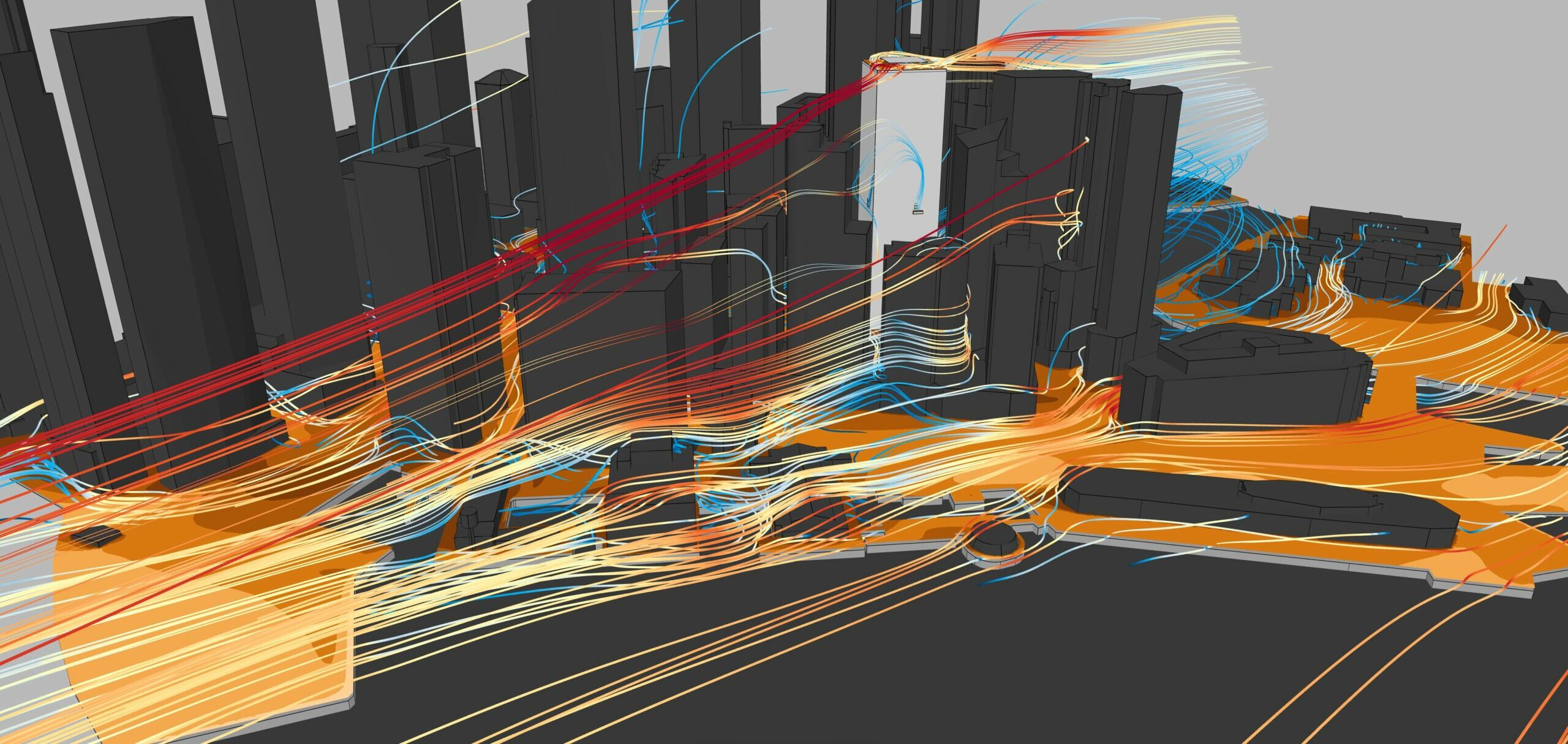As anyone who’s spent time around skyscrapers knows from experience, the wind effects encountered at ground level — as well as on patios, balconies, terraces, etc. — can be very strong and wildly variable.
These sustained flows and strong gusts, which can differ enormously from season to season, result from the way wind interacts with buildings. When it encounters a structure such a tall building, wind will find the path of least resistance to continue its motion. This simple statement belies a tremendous amount of underlying complexity.
In this post, we’ll examine some of the most important wind effects in urban design. We’ll also explore a range of measures that architects and building designers can use to mitigate and manage them. First, let’s briefly review why understanding wind effects matters.
Why is understanding wind effects so important?
Wind effects — at least as they relate to pedestrian comfort and safety (as opposed to a building’s structural integrity) — typically receive little attention in architecture and design courses.
Nevertheless, understanding wind effects is becoming increasingly important, both for receiving design approvals and for improving the efficiency of the design process.
Wind is a major contributor to the microclimate created by large structures. When wind ‘searches’ for a path around obstacles, the complex flows that result impact both comfort and safety.
For these reasons, ever-more cities and municipalities require Pedestrian Wind Analysis Guide before they approve site plans and building designs.
But beyond fulfilling a requirement, pedestrian-level wind analysis also helps architects and designers make cost-effective and thoughtful building designs.
For example:
- Understanding wind effects allows designers to plan spaces that are suitable for outdoor amenities and that incorporate natural ventilation (e.g., to benefit from a cooling breeze on a hot summer day);
- Alternatively, the same analysis can identify comfort and safety problems early in the design process, preventing expensive building re-designs when problems are only uncovered later.
Wind effects in built environments
Pedestrian wind comfort analysis may involve one or more approaches. From fast-and-affordable AI-powered options suitable for early stage exploration, to computationally intensive fluid dynamic simulation of later designs, to atmospheric boundary layer (ABL) wind tunnel tests that are often necessary for final approval — all have the same general objective: helping architects understand the conditions that result from a range of effects that occur when wind encounters their proposed structures.
Downwashing
Wind speed increases with elevation: the higher a location is above the ground, the more likely it is to experience higher average wind speeds and stronger gusts — a reality that has important implications.
Consider a tall building with a broad façade facing a strong wind stream. When the stream encounters the building, some of the flow moves upward and over the building, but much of the stream is redirected downward and around the lower portion of the building.
This is one reason why most pedestrian wind comfort study guidelines include triggers based upon building height. For example, the City of Toronto’s Pedestrian Level Wind Study Terms of Reference distinguishes between Low buildings (from 20m to 60m in height), Moderate buildings (from 60m to 100m) and High buildings (above 100m).
Additionally, when there are few obstructions to impede wind flow. For example, when the surrounding terrain is fairly uniform, or buildings within an area all have similar heights — the average wind speeds are higher. In this situation, a building that rises above its surroundings will have a significant influence on the local area by deflecting wind flows.
When wind flows above a short building and encounters a tall building, the area between the two can also be subjected to very high gusts.
Between downwashing effects and a pressure differential, the space between two buildings of different heights can get very gusty
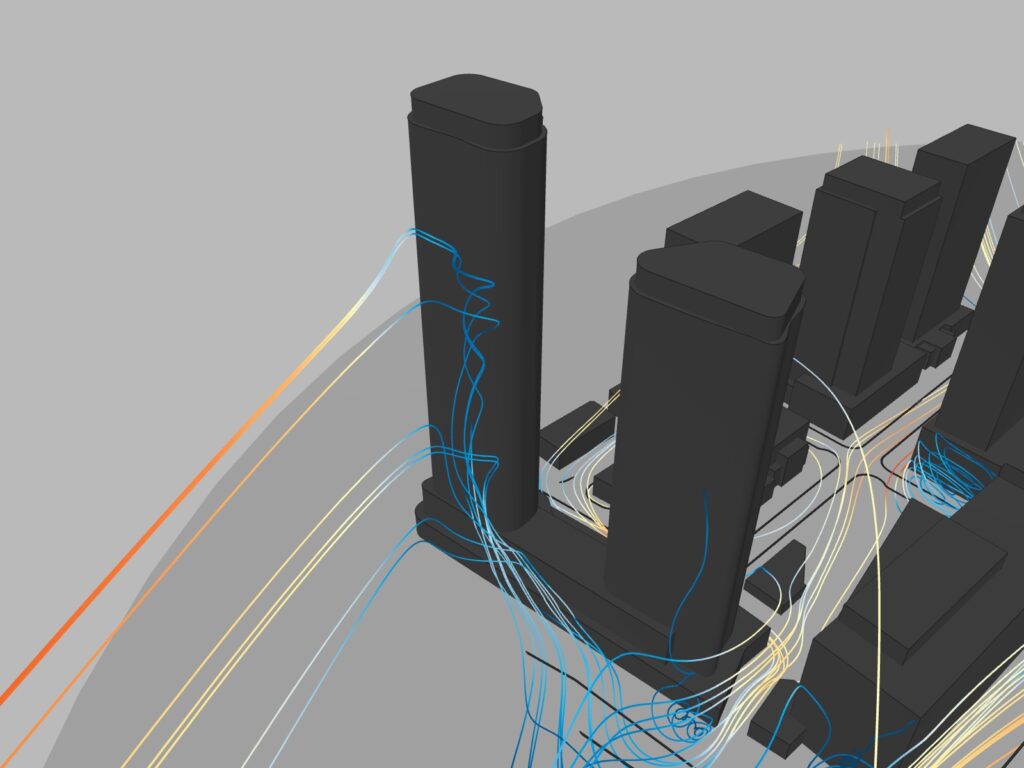
The City of London accounts for such effects in their Wind Microclimate Guidelines by going beyond absolute building height to also include additional triggers based on relative height:
- Similar or lower than the average height of surrounding buildings
- Up to double the average height of surrounding buildings
- Up to 4 times the average height of surrounding buildings
The Venturi effect
When gaps between buildings are narrow relative to building heights, wind speed can increase substantially due to the Venturi effect. In simple terms, for the same mass of air (mass continuity) to pass through a narrower space, the velocity must increase. At the same time, the increased kinetic energy resulting from the increased velocity must be offset by a decrease in static pressure (and pressure differentials also contribute to microclimate effects).
The Venturi effect is the main reason why walking down a street or between buildings can feel like being in a wind tunnel
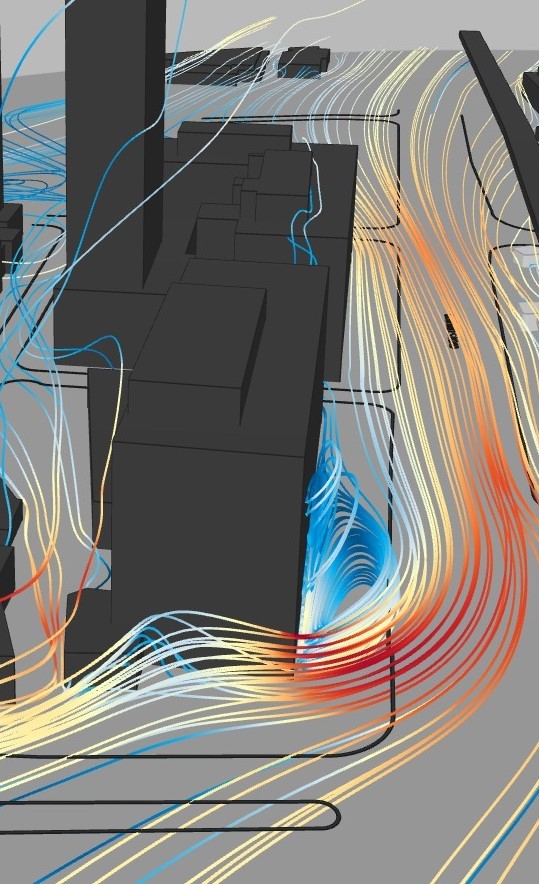
A similar acceleration is also common under bridges and in tunnels/underpasses as the air is forced to go through a narrow passage.
Corner acceleration and vortices
Corner acceleration describes the scenario in which a wind flow ‘attaches’ to a building, and then separates at the edges — creating high wind activity at the corners.
Ever walk alongside a building, turn a corner, and almost get knocked off your feet? Blame corner acceleration.

Corners can also create vortices, which are swirling patterns of fast-moving air. Beyond impacting pedestrian safety and comfort, these vortices can cause harmonic oscillations within the building structure itself. This is a potentially serious safety issue caused by the a phenomenon called vortex shedding.

The complexity of real life
Of course, in a typical urban setting, wind interacts with multiple buildings and the many factors at play work in combination. This leads to extraordinarily complex flows that often vary widely due to different wind directions and speeds.
For example, downwashing forces a wind stream down a building’s façade, but also around the building’s corners — strengthening the corner acceleration. Flows passing around the corner may encounter similar flows from an adjacent building, creating even stronger streams due to the Venturi effect. And even a minor change in wind direction or strength can lead to very different pedestrian experiences.
In the real world, wind effects within a building’s microclimate are the result of many different factors acting concurrently

Wind mitigation measures
Understanding wind effects and the factors driving them allows designers to implement a variety of measures to improve safety and comfort.
Potential measures range from the very large to the very small; ideally, larger measures are introduced early in the design process to exert significant influence on wind flow, with smaller measures reserved for fine-tuning in the later stages.
Wind mitigation measures play a crucial role in ensuring the safety, stability, and comfort of structures in areas prone to strong winds.
Let’s delve into why these measures are of utmost importance:
- Comfort: Excessive wind can create uncomfortable indoor conditions, leading to drafts, noise, and temperature fluctuations. Mitigation measures like windbreaks, landscaping, and proper building orientation enhance occupant comfort.
- Resilience: In the face of climate change and extreme weather events, resilient buildings are essential. Wind-resistant designs enhance a community’s ability to bounce back after disasters.
- Safety: When left unconsidered, wind-related issues can arise leading to safety concerns for building occupants and pedestrians. These include high ground-level winds that can move furniture, blow umbrellas out of your hands, or even knock you to the ground. Another potentially devastating effect is the disruption of construction materials in heavily populated areas, which can lead to serious injury.
- Effective Urban Planning: Integrating wind studies into urban planning ensures safe public spaces, minimizes wind safety issues, and optimizes pedestrian comfort.
Let’s explore some mitigation options that you can implement on your project from the early design stage to post-construction.
Site planning: Orientation, siting, and building massing
The most functionally and cost-effective wind control measures involve adjustments early in the design process and relate to the location, orientation, height, massing, and form of buildings — even applying to an entire site (i.e., multiple buildings), when possible and practical.
These large-scale modifications can be assisted by features like tower setbacks, large podiums, tower shapes, corner articulations, colonnades/arcades, and more.
Placing relatively shorter buildings upwind of relatively taller buildings can reduce the taller buildings’ wind exposure
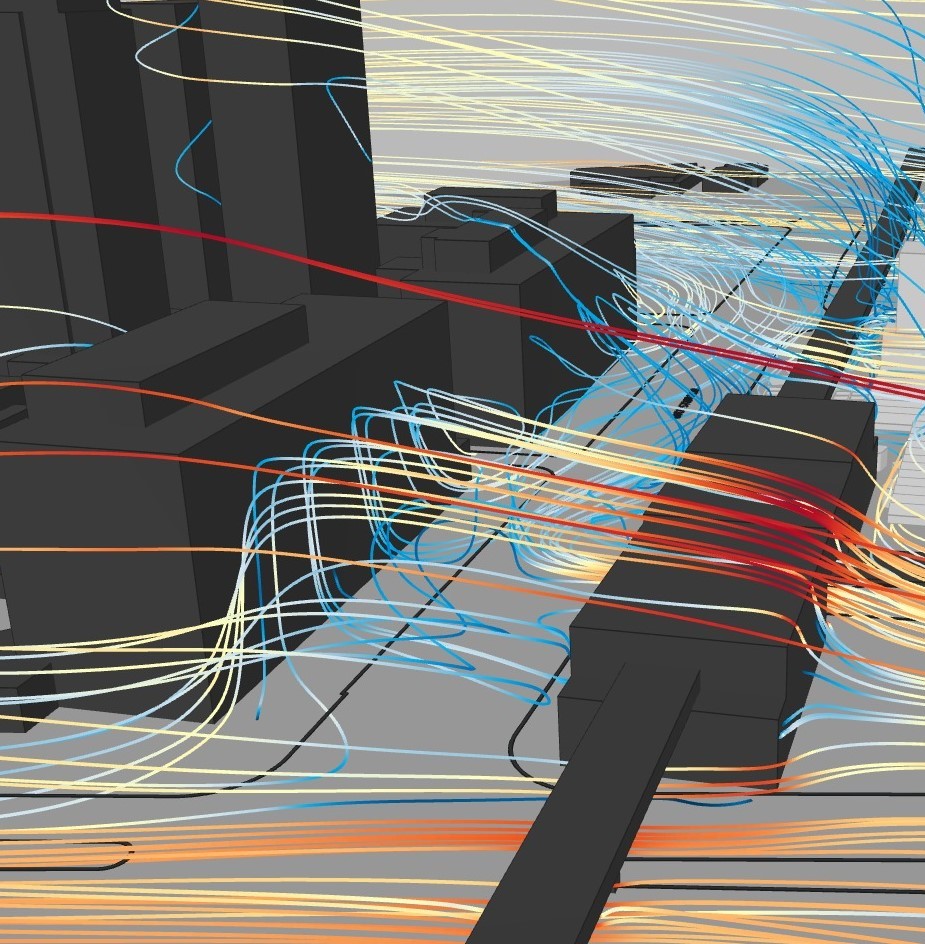
Building form
Strategic reshaping of a building can allow wind flow around it to be either more streamlined (e.g., by employing chamfered or rounded corners) or diffused at the corners (e.g., through use of stepped or re-entrant corners).
Low buildings may also be designed with a stepped form to achieve a similar wind speed reduction.
Chamfered corners, podiums, and stepped forms can all help to limit undesirable wind effects
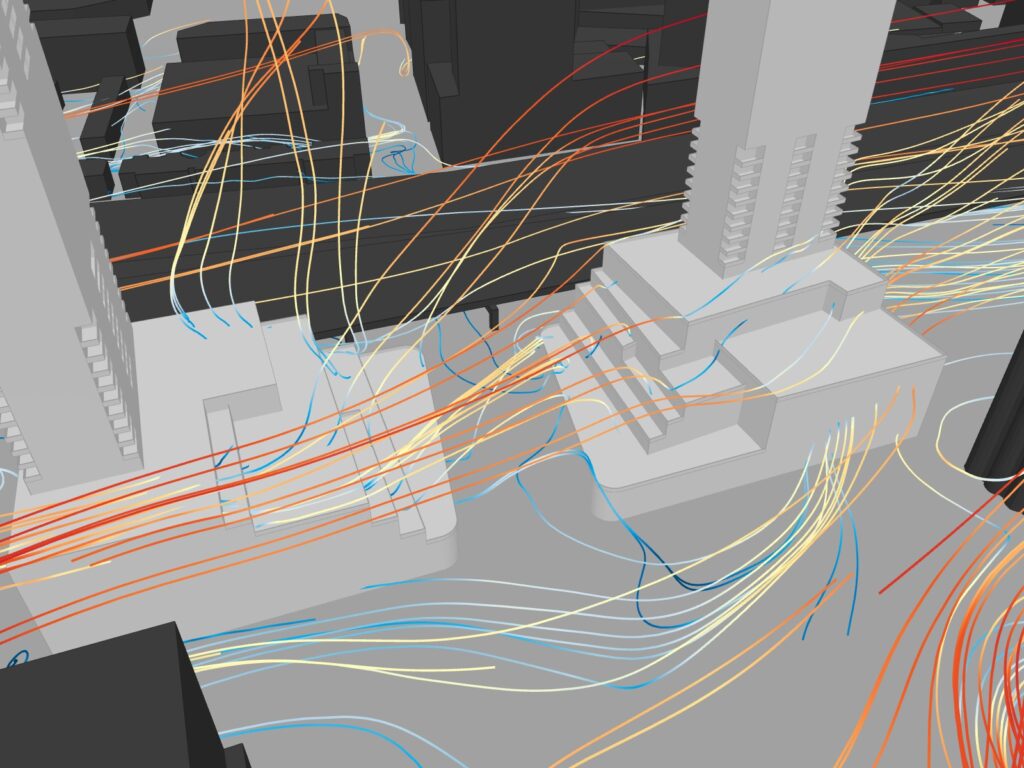
Architectural details
Once the orientation, siting, and building massing have been addressed to manage wind effects, the adverse impacts of high-wind conditions may be further reduced by introducing smaller-scale architectural details.
Features such as façade articulations, canopies, covered walkways, and recessed entrances are effective solutions for localized wind mitigation.
Recessed walls can also be effective at protecting areas from ambient wind activity, with additional practical benefits. For example, if entrances are in such recessed areas, it also creates a waiting area for people using the entrance, as well as a transition zone that allows those who are existing to get acclimatized to the ambient conditions.
Covered walkways are just one type of architectural detail that can help to mitigate wind effects; used at the base of tall towers, they protect pedestrians from strong downwashing.
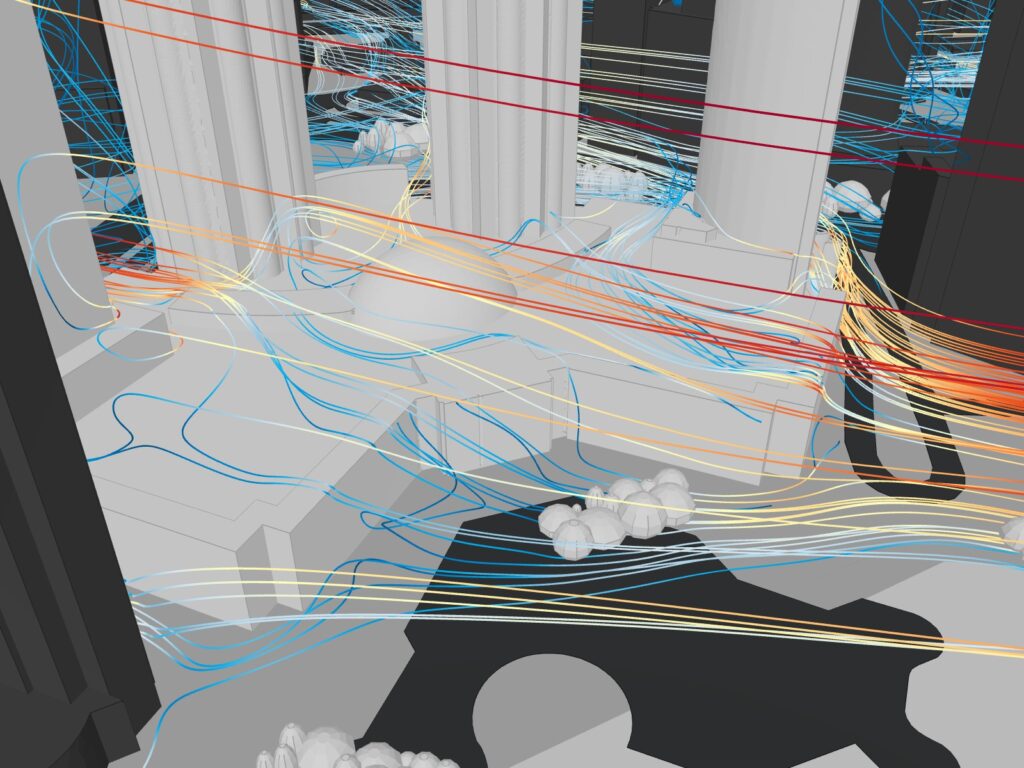
Localized accessory elements
Once all large-scale and architectural design options have been explored, designers can introduce accessories to further fine-tune wind flows.
Wind screens, street art, and landscaping are just a few elements that can improve localized safety and comfort while also enhancing a building’s aesthetic appeal.
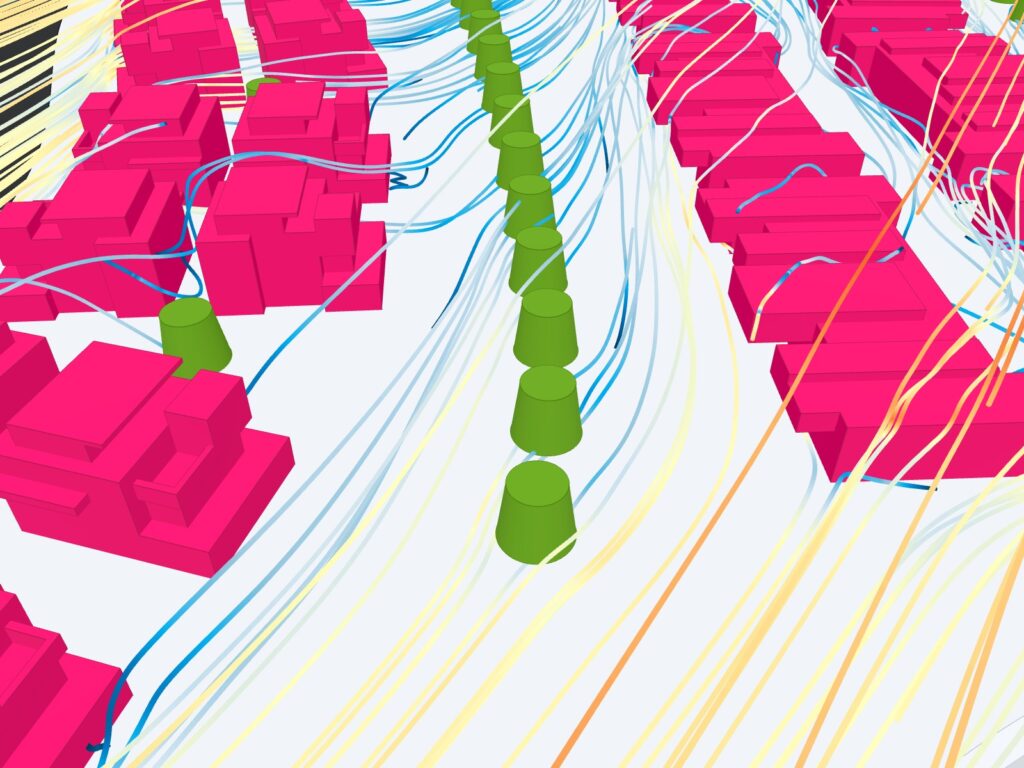
Wrapping up
The real world is rarely as simple as the examples shown in this post, which is really meant to the complexity of the many factors at play in how wind effects in urban design contribute to the comfort and safety of a microclimate.
Practically, only simulation and modeling can reveal to designers and architects the true effects of the wind, and only simulation and modeling can empower them to efficiently explore effective mitigation measures.
For those who want to accelerate the design process, understand wind effects in urban design, meet pedestrian wind analysis requirements, and maximize the value of their buildings, Orbital Stack and RWDI can help, they have the data and expertise needed to know which tool is best for conducting wind studies. Also, when to choose CFD for a pedestrian-level wind study is the potential aspect to think.
- Orbital Stack’s ML-powered wind simulation engine is specially designed to enable rapid, low-cost iteration during early design stages — perfect for informing site- and building-level modifications when they make the most sense.
- Our carefully tuned, purpose-built CFD simulation capabilities provide more-detailed and more-accurate insights for middle-stage designs, allowing you to assess the impact of form adjustments and architectural modifications.
- RWDI’s renowned wind engineering expertise — including a state-of-the-art ABL wind tunnel — can get even the most complex and groundbreaking designs over the finish line.
